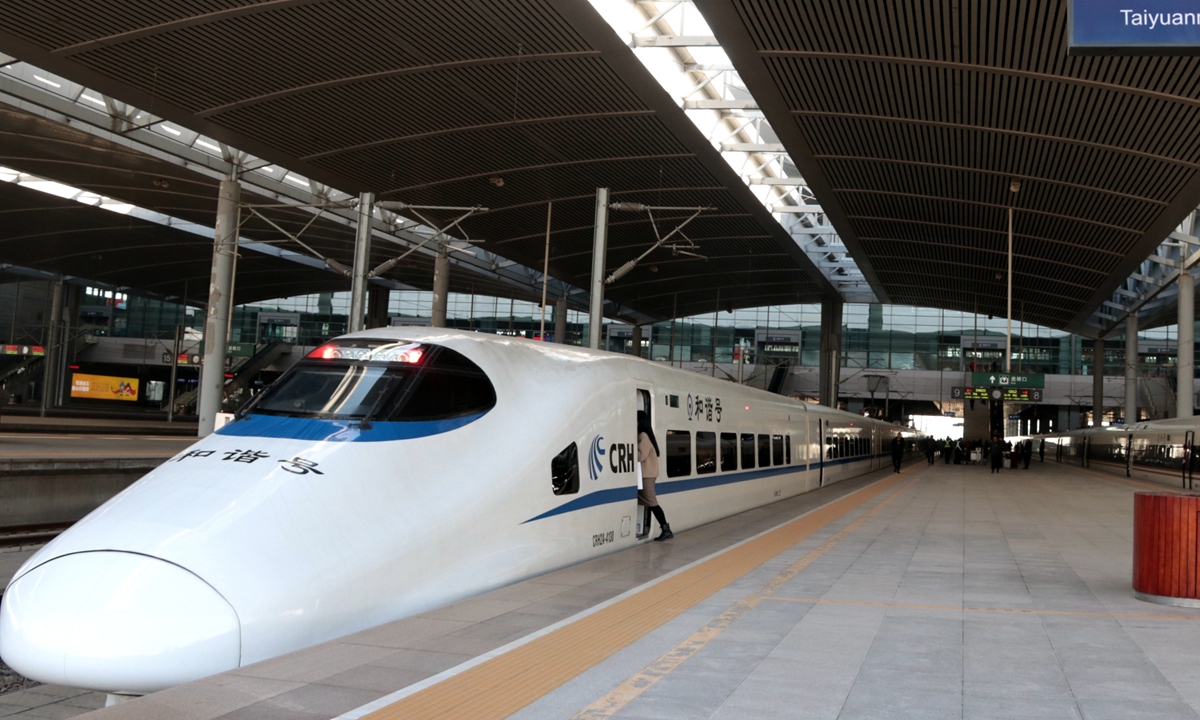China's high-speed railways to reach 38,000 km by year-end: white paper
Source: Global Times Published: 2020/12/22 15:22:09

A new high-speed passenger railway linking Zhengzhou, capital of Central China's Henan Province, and Taiyuan, capital of North China's Shanxi Province, started operation on Saturday. It is the first high-speed railway running through the Taihang Mountains. Photo: cnsphoto
Thanks to the fast development of its network, the total track length of China's national railways is expected to reach 146,000 kilometers by the end of 2020, with high-speed railways to reach 38,000 kilometers, Yan Hexiang, chief engineer of the National Railway Administration, said at a press briefing on Tuesday.
During the briefing, a white paper on the country's transport development was released. Titled "Sustainable Development of Transport in China," it summarizes China's transport achievements over the past decades and goals for the years ahead.
China's transport infrastructure has formed a highly efficient network, with high-speed railways reaching 35,000 kilometers as of the end of 2019, while expressways hit 150,000 kilometers, both ranking No.1 in the world, according to the white paper.
The country has built a domestically developed high-speed railway and equipment manufacturing technology system, with its Fuxing series able to run up to 350 kilometers per hour. China is the first in the world to have realized autopilot controls on trains running at 350 kilometers per hour.
China leads the world in technology for railways that run at high altitudes and in extremely low temperatures, and for high-speed and heavy-haul railways.
The internationalization of China's railway standards has made new progress, and its technologies and equipment have been exported to more than 100 countries and regions.
As of last month, the cumulative number of China-Europe express trains exceeded 32,000.
The white paper also outlines China's goal of building itself into a strong transport infrastructure country by 2035.
By 2035, the country's modern transport system will be able to reduce commuting time within a metropolitan area to less than an hour, inter-city travel within urban clusters to less than two hours, and long-distance travel between major cities to less than three hours, according to the document.
In the coming years, China's railway R&D will focus on key technology breakthroughs, including bullet trains running at 400 km/h, ultra-fast maglev systems running at 600 km/h, and other sophisticated transportation technology, it said.
Global Times
Posted in: INDUSTRIES